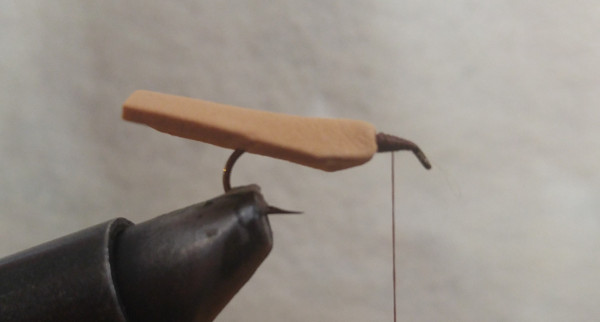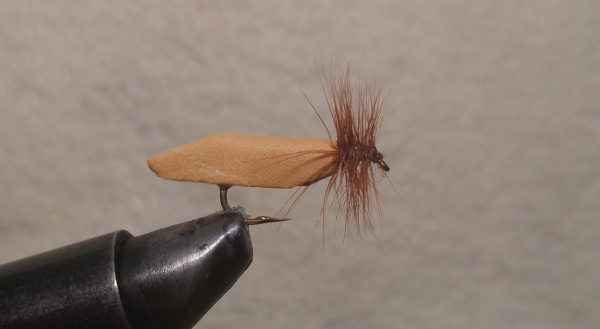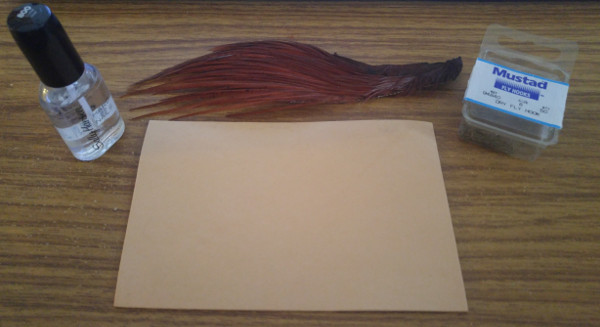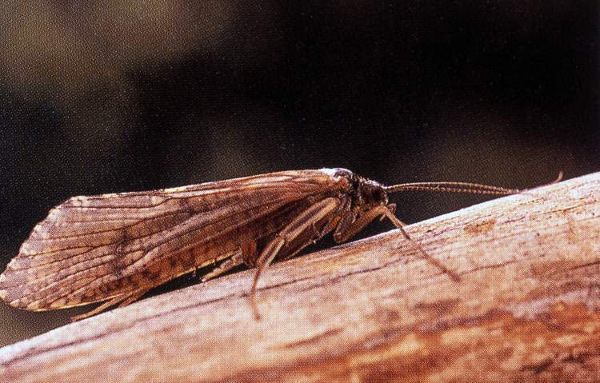I love fishing caddisfly patterns, you can usually get really aggressive takes from trout, especially while skating them. This foam caddisfly pattern takes inspiration from the tried and true goddard caddis. While the goddard caddis is one of the more buoyant flies out there using natural materials, it still can become water logged after enough time on the water.
The foam caddisfly pattern is an unsinkable version of the goddard caddisfly, for use at dusk, dawn, or night time fishing. It’s a great pattern because it’s hard to tell if your fly is still floating or not at night, and since it’s foam, there’s no question that this pattern will always be floating. It’s okay that the fly isn’t as natural as deer hair patterns are, since the trout can’t inspect the fly as closely at night. While the pattern shown here is tan, black would be an ideal colour if you’re planning to fish it primarily at night.
Materials
- Thin sheet of foam (must be able to fold foam around hook)
- Dry fly hook in size of your choosing. This pattern uses a size 6 Mustad dry fly hook.
- Super glue
- Brown dry fly hackle.
- Brown thread
- Head cement/ hard as nails
Fly Tying Instructions.
Step 1: Mash hook barb in vice.
Step 2: Cut a piece of foam about twice as thick as you want the wing to be. It should be long enough that it extends about a third of the hook length past the end of the hook. This will give you plenty of room to mess around with trimming later.
Step 3: Fold the foam in half (length wise) and cut the corner off on the side that is going to be tied in by the hook eye.
Step 4: Fold the foam over the hook. Tie in behind the hook eye, leaving enough room for the hackle we will add later. Make thread wraps to smooth the foam down do the hackle will wrap nicely later. I like to tie mine in at a slight upward angle from the hook shank.

Step 4: Apply just a little bit of super glue to the inside of the foam and pinch the foam together with your fingers to make it stay closed. Be careful not to go overboard with the super glue as you risk gluing your fingers together, or your vice shut!
Step 5: Tie in the hackle right infront of the foam, and move your thread forward to right behind the hook eye.
Step 6: Secure the hackle in your hackle pliers of choice, and make forward wraps toward the hook eye.
Step 7: Whip finish behind the hook eye, cut thread free, and apply head cement.
Step 8: Trim the tail end of the foam. Make a angled cut from the top, and a smaller cut from the bottom. You are tying to mimic the shape of a caddisfly’s wing, as can be seem below.
That’s it, it’s a very quick and simple fly, which is another advantage it has over the traditional goddard caddis pattern. I love goddard caddis’s, but I have to admit they are time consuming to tie! Cut up a few squares of foam and you’ll be cranking these foam caddisfly fly’s out very quickly.
If you buy anything below, I get a bit of beer money (commission).




Pretty cool fly and I’m always looking for a new caddis pattern.